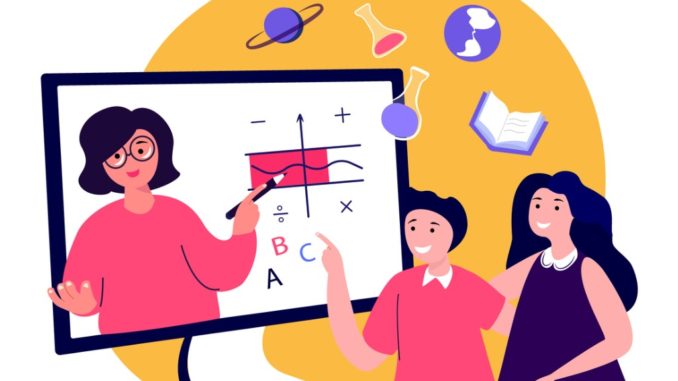
Schools have embraced apps and remote classes in the past year. Some see benefits in virtual learning but others fear the impact on disadvantaged children and privatisation by stealth
CREDIT: This is an edited version of an article that originally appeared on The Guardian
Many school leaders are concerned that more tech-based teaching may add to the relative advantages already enjoyed by wealthier pupils. Research by the Sutton Trust found, for example, that 30% of middle-class pupils were doing live or recorded online lessons at least once per school day, compared with just 16% of working-class pupils. Those at private schools were more than twice as likely to do so than those at state schools.
Teachers at Barham Primary School, Wembley, provide paper-based home learning packs for the average of three or four pupils per class who don’t have digital access. “Most of the children have the tech in some form, but it might be using Dad’s mobile ‘phone before he goes to work, or on a flatscreen TV in the living room,” says Karen Giles, headteacher at Barham, where many pupils live in multiple occupancy homes. “The lack of equity in this situation means that those children who are without are more disadvantaged, and children with advantages are more advantaged. I’m determined to close that gap.”
Karen tried to do this partly by taking up the government’s offer of help. The Department for Education says that it has provided more than 800,000 laptops and tablets for disadvantaged pupils in response to COVID-19. Barham’s allocation of 20 was cut to just six when the DfE changed its provision criteria in October. The Sutton Trust reported earlier this month that just 10% of teachers in England said all their pupils had adequate access to devices and the internet.
The digital divide isn’t, however, just about whether pupils have devices. Children whose parents don’t have the skills, or time, to help them use online platforms, and troubleshoot when needed, are also at risk of falling behind. One study found that schools with more disadvantaged pupils narrowed the gap in usage of online maths platforms with those in affluent areas during lockdown, but achieved lower levels of student engagement.
Embracing big data?
“Teachers are quite adept at looking out at the classroom and quickly assessing who has got it and who has questions,” says Audrey Watters, a US journalist who has been covering edtech since 2010. “That’s a lot harder to do with video conferencing software or digital worksheets.”
Others, however, believe teachers could use digital tools to better identify who most needs their help. “Used well, learning analytics and big data can help teachers see in a new way how those different students learn differently, and engage with them differently,” says Andreas Schleicher, head of education at the Organisation for Economic Co-operation and Development.
Privacy campaigners are concerned that teachers, never mind parents and children, are unable to keep track of what edtech companies are doing with pupil data. When schools sign the G Suite for Education Agreement, for example, they agree that Google makes ‘commercially reasonable changes’ to their terms ‘from time to time’.
“The terms and conditions for many of these products are pages long, hard to follow, change frequently – and schools don’t send them to parents anyway,” says Jen Persson of the campaign group Defend Digital Me. “So it’s very hard to understand how Google, or anyone else, processes a child’s data.”
In September the Washington-based International Digital Accountability Council reported that 79 of the 123 edtech apps it examined shared user data with third parties. This could include names, email addresses, location data and device IDs. It found, for example, that the popular language learning app Duolingo was sharing user IDs with outside parties, including Facebook.
Andreas dismisses such fears. “When you watch Netflix you contribute to the data systems, and that will help with customisation. That’s how big data works. I don’t think we should put education in a different box.”
Missed part one of this important piece? You can read it HERE



Be the first to comment